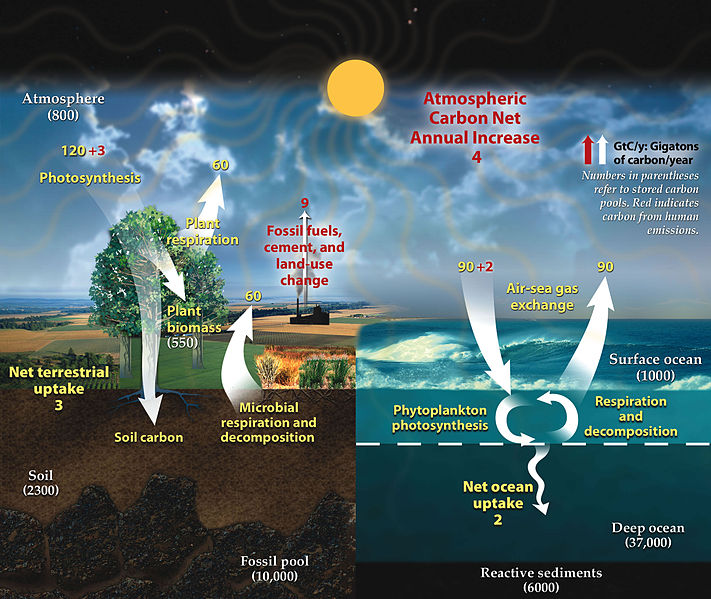Milankovitch cycle
During those 800,000 years, Major One possible cause of long-term climate change is the Milankovitch cycles. This is a concept created in the 1930s by Milutin Milankovitch, a Serbian mathematician, astronomer, climatologist, geophysicist and civil engineer. Correlations with Milankovitch's numbers were revealed decades later by studies of deep-sea sediment cores. These cycles are, in fact, Eccentricity Due to changes in the Earth's orbit, Tilt The angle of the Earth's axis changes, Precession It continues to shake.
Of earth Tilt As the Earth's axis expands, seasons become more extreme and warmer summers encourage glacial melting. Each cycle 41,000 years.
Of earth Precession It can be imagined as a slowly spinning, unbalanced top. This precession causes summers and winters to be more extreme in one hemisphere than in the other. Each cycle is 26,000 years.
Of earth Orbit The Earth is approximately circular, and changes in eccentricity over time are actually very small, but as eccentricity increases, the Earth's temperature will of course change as its distance from the Sun alternately moves closer and further away.
These variations from a nearly circular orbit also cause some seasons to be slightly longer and others to be slightly shorter. 100,000 years (However, it varies between 84,000 and 120,000 years.) It is thought to have been the dominant factor influencing Earth's climate since about 800,000 years ago. Prior to that, 41,000-year cycles dominated, at least until 3 million years ago.
Essentially, these variations affect the way the Earth is heated by the Sun. The incoming solar radiation is called insolation, and Milankovitch's theory is called orbital forcing. He was primarily interested in the total summer radiation near 65 degrees north latitude, where the ice sheet previously formed.
Now, if we look again at the image above showing climate temperature and carbon dioxide and methane levels, we can see that climate temperature reaches a maximum spike approximately every 100,000 years. The period of time for this is determined by the Milankovitch eccentricity cycle, which is a key variable. Climate is changing due to these influences, and has absolutely nothing to do with methane or carbon dioxide levels. from now, All we can conclude is that climate temperature causes changes in carbon dioxide and methane levels, not the other way around.
We know that emphasizing only the 100,000 year period does not fully explain how the Milankovitch cycles relate to real climate. This simplification does not show the solar radiation aspect, but it is enough to show the relationship between global temperature and these gases.
Possible arguments
Some may argue that the Milankovitch cycle theory needs to be revised and perhaps does not explain as much as previously thought, but even so, when we see a rise in maximum temperature every 100,000 years and a corresponding fall in temperature, we can see that this cannot just be the result of carbon dioxide and methane levels acting independently.
Some may argue that carbon dioxide is the cause of global warming, even though the effects of orbital forces were more prevalent in the past than they are today. They may argue that the current high levels became more prevalent and therefore cause global warming. However, about 3 million years ago, natural carbon dioxide levels were as high as the current total levels. At that time, the Earth's climate was warmer and ice caps were only on the Antarctic.
However, the orbital forcing of the Milankovitch cycles was still the primary factor controlling the climate at that time, even though the dominant cycle was a 41,000 year cycle. There is no evidence that carbon dioxide or methane levels were controlling climate change at that time, but rather evidence suggests that the levels of these gases were simply responding to rising temperatures. Therefore, when we look at similar carbon dioxide levels today, there is no evidence that it is causing global warming. The 3 million year example shows that orbital forcing is still dominant.
More people may accept that carbon dioxide levels are controlled by climate temperature, but claim that carbon dioxide is the cause of global warming. In their scenario, warming occurs due to rising carbon dioxide levels, which in turn cause further warming, setting off a chain reaction.
A possible argument (one that I have actually heard) is that if warming were to occur due to increased carbon dioxide, the effect would not be large enough for a feedback to kick in. This is wishful thinking, because if warming did occur, no matter how small the temperature rise, the feedback from rising carbon dioxide levels would kick in. This inevitability arises because climate temperature is in fact part of a feedback system; therefore, there is always a tendency for runaway warming. if Carbon dioxide caused global warming.
Water vapor's impact on climate
How do these gases actually affect climate temperature? Water vapor is said to have a stronger “greenhouse effect” than carbon dioxide or methane, so it's obviously worth taking humidity into account.
“What's pretty useful about water vapor for our research is that it's not evenly spread around the world, so we can compare humid places with dry places. Climatologists are concerned about the long-term effects, but nighttime tends to be pretty cool, so we can actually look at things on shorter time scales.”
I quickly realized that I couldn't just look at desert and humid regions to do this study, as there are temperature variations in different regions and temperature readings can be taken at different locations. So, to be consistent, I chose areas that were likely to have only one measuring station. The only large area I used was Sokoto, Nigeria, which is known to have only one station.
Another criterion was to choose locations with lots of data to pick the hottest and wettest months. Also, more data tends to minimize errors. Luckily, these locations also gave me average maximum and minimum temperatures, so I could avoid record-breaking years. All of the data shown below is from Selected month In either case.
To minimize the effects of random weather and amplify the differences between humid and dry regions, we wanted our data sites to be in locations where heat from the sun is greatest. Therefore, we chose locations in the tropics, specifically along the equator, where the sun's zenith is directly overhead. In these regions, the length of day and night is roughly the same even during the hottest times of the year, thus maintaining consistency between warm days and cool nights. The only exceptions are three non-tropical locations: Basra, Iraq; Furnace Creek (Death Valley), California, USA; and Ein Gedi (Dead Sea), Israel.
Relative Humidity (RH)
There are two aspects of air humidity that must be considered, and they are actually related via temperature, and to some extent via pressure: Relative humidity is easy to visualize if you imagine a humid, cloudy, rainy environment as a high percentage score, with warm, dry, sunny periods being low on the scale.
That said, my data contains many examples where there is nearly continuous sunshine in humid weather to minimize the cooling effect of clouds, and each example includes the average sunshine duration to control for this aspect.
Higher relative humidity values were found to have an effect on air temperature, but not in the way expected. There was a tendency to narrow the temperature difference between day and night, but in the process, The daytime temperature also drops., Relative humidity works inversely to greenhouse gases.
It is tempting to think that the wide temperature range of dry air is completely random, due to its lack of greenhouse gas emission capacity. However, the temperature range of dry air varies somewhat, but is by no means random. This is highlighted in the two examples below, Basra and Furnace Creek (Death Valley). We will add that Basra's midsummer solar energy is 0.8% lower than the other examples, and Furnace Creek (Death Valley) is 2.6% lower. This is due to their respective latitudes of 30.5°N and 36.5°N.
Basra is slightly above sea level and experiences the lowest relative humidity of 10% in the hottest months, which is lower than any other city. absolute Humidity at some selected locations is similar to Basra, despite its higher elevation. Furnace Creek (Death Valley) has a relative humidity of 14%, which is more typical in desert regions, but is 58 meters (190 feet) below sea level. The average maximum temperatures at Basra and Furnace Creek are higher than the other selected locations, but the nighttime temperatures at these two locations are similarly high.
This is ample evidence that both dry air and air with increased pressure/density act as greenhouse gases.
Absolute Humidity (AH)
Absolute humidity is essentially the amount of water vapor per unit volume of air. You may have experienced the phenomenon where when warm air touches a wet surface, the surface dries out (the hand dryer effect). Moisture moves into the air, increasing the absolute humidity.
In some cases, where the humidity was high, the absolute humidity values did not change as the relative humidity decreased. In other cases, the absolute humidity decreased along with the relative humidity, especially in desert areas where the values became very low. Again, there was no sign of any greenhouse effect from water vapor.
Separate wet and dry areas
The first example included a wide range of fairly humid locations around the world. The altitudes above sea level of the dry locations had to match the altitudes above sea level of the humid locations, and most of the dry locations were in the southeast part of the Sahara Desert.
Two of the locations I studied, Sangklirang, Indonesia, and Kuching, Malaysia, are coastal, so cooler water temperatures near the shore would obviously have an effect on air temperatures, but the ocean temperatures near Sangklirang and Kuching were 29ºC (84.2ºF) and 30ºC (86ºF), respectively, which is roughly the same as the average maximum air temperature, so the cooling effect would be negligible.


